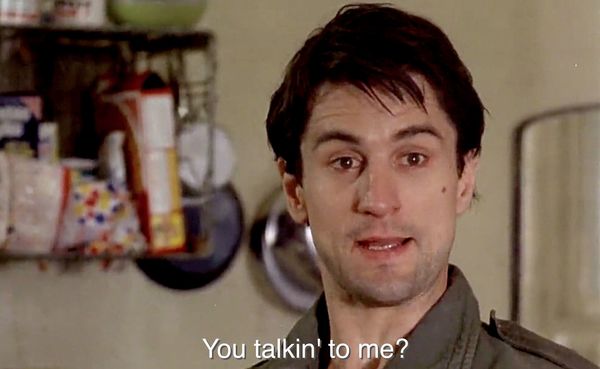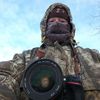Is Bracketing Really Necessary?
May 5, 2019 22:37:52 #
Metis407
Loc: Canada
What a load of rubbish to say that if you use that technique you dont know how to expose properly!!!
May 5, 2019 22:41:22 #
olemikey
Loc: 6 mile creek, Spacecoast Florida
Yet another example of photographers choice. If you like or need exposure or focus bracketing (or both) to suit your particular photo adventure, do it, it is your choice. If anyone doesn't like it just smile and wave!
May 5, 2019 23:40:49 #
May 6, 2019 01:38:28 #
wdross
Loc: Castle Rock, Colorado
olemikey wrote:
Yet another example of photographers choice. If you like or need exposure or focus bracketing (or both) to suit your particular photo adventure, do it, it is your choice. If anyone doesn't like it just smile and wave!

If one gets the shot they want or need, then they chose the right path to get there.
May 6, 2019 01:52:10 #
It is not a necessary function, especially for those who think sitting at their computer can fix anything, but "proper" exposure is determined by the camera's onboard computer or the photographer's experience. Yet the artist in all of us may prefer a difference in the scene for various reasons; it's totally a personal preference. Unless shooting for a client, create an image that pleases you--it's your picture, make it what you want it to be (later on you can spend time at your computer hutch if you wish).
May 6, 2019 05:46:41 #
Metis407 wrote:
What a load of rubbish to say that if you use that technique you dont know how to expose properly!!!
Would fully agree as an avid HDR shooter. I don't do it because I don't know how to expose. I do it because I do. I still set ISO and Aperature to get my depth of field. I usually bracket .7 to 1 stop 3 exposures. I then merge the images together.
To say it is for those who don't know how to expose is insulting. Set the aperture ISO or shutter speed incorrectly and you have junk. Those who say this do not understand this process at all.
Why are people so bitter and salty? People who focus stack don't know how to focus properly then huh?
May 6, 2019 05:46:53 #
catchlight..
Loc: Wisconsin USA- Halden Norway
... and on its 8th page
I see two sides here and it seams to focus on the information available in the shadows, for some odd reason.
Two camps
1. to the extreme right, we have those who are utilizing Raw 16 bit rich image data for capturing three exposures, and banking for a possible over-exposure. Yes capturing noise free shadow detail is a plus, and all from a well developed in camera feature called bracketing.
2. To the extreme left, we have those that profess to be all knowing, yet take only one simple Jpeg, and with no editing can capture the perfect image, due to their "honed skill of exposing to the right".
I will keep reading and chuckling...
I see two sides here and it seams to focus on the information available in the shadows, for some odd reason.
Two camps
1. to the extreme right, we have those who are utilizing Raw 16 bit rich image data for capturing three exposures, and banking for a possible over-exposure. Yes capturing noise free shadow detail is a plus, and all from a well developed in camera feature called bracketing.
2. To the extreme left, we have those that profess to be all knowing, yet take only one simple Jpeg, and with no editing can capture the perfect image, due to their "honed skill of exposing to the right".
I will keep reading and chuckling...
May 6, 2019 06:40:21 #
catchlight.. wrote:
.....with no editing can capture the perfect image.....
Anybody who thinks they can produce fully optimised shots SOOC on a consistent basis needs to do a rethink. Most shots (realistically that would be something like 99.99%) can be improved in PP, and that is especially true of raw (which needs basic sharpening and contrast at the very least). We have to stop short of saying every shot can be improved, because there are always exceptions. For example you may want a shot to be soft detail-wise and low contrast, so SOOC may be OK, but that will be a very rare occurrence for most people.
If anybody thinks that SOOC is fine for more than just those rare occurrences, they'e either lacking basic PP skills or they don't appreciate the value of being able to optimise their shots in PP. And if you opt for the jpg option you're significantly limiting your possibilities for further adjustment or manipulation. I would be inclined to not believe anybody who claims their shots never need any further optimising or manipulation. For a start, we are all at the mercy of circumstance most of the time, and how often does life provide us with perfect circumstances? Anybody who isn't embracing PP as part of their workflow is denying themselves the option of optimising their results.
May 6, 2019 09:28:28 #
bleirer wrote:
That looks like a very worthwhile course if you are willing to spend the money. His step 2 in the free video was exposure blending, and that is one thing bracketing can be useful for. https://blamethemonkey.com/free-photography-and-post-processing-tutorials-elia-locardi
I wish I had the courses, but it looks like he brackets (technically) but over several hours, to get what he wants... guess thats still bracketing?
May 6, 2019 09:41:28 #
"information available in the shadows, for some odd reason."
The shadows are where most of the noise happens, I think. I believe the idea is that there are fewer bits/bytes, less data, assigned to the shadows and progressively more as you go toward the highlights, so underexposed shadows are noisy. If we overexpose the shadows they get more data when shot and get dialed back later in processing. On the other hand highlights that are blank white are ugly. So in a bright scene if we shoot to preserve the highlights we risk noisy shadows, if we shoot to preserve shadows we risk a blown highlight. That's why they say expose to the right, but not too much.
Once you get used to masks, it is not too much extra time for a special shot to reveal a portion of a better exposed scene in place of the blown part. Even if the subject is moving you can fix parts away from the subject.
The shadows are where most of the noise happens, I think. I believe the idea is that there are fewer bits/bytes, less data, assigned to the shadows and progressively more as you go toward the highlights, so underexposed shadows are noisy. If we overexpose the shadows they get more data when shot and get dialed back later in processing. On the other hand highlights that are blank white are ugly. So in a bright scene if we shoot to preserve the highlights we risk noisy shadows, if we shoot to preserve shadows we risk a blown highlight. That's why they say expose to the right, but not too much.
Once you get used to masks, it is not too much extra time for a special shot to reveal a portion of a better exposed scene in place of the blown part. Even if the subject is moving you can fix parts away from the subject.
May 6, 2019 10:24:37 #
There are a lot of pages on this thread but I'll post my response now. It's not just a "don't know how to set exposure" problem but sometimes very underexposed areas and very brightly exposed area in other areas.
This is where HDR (High Dynamic Range) photography comes in play. Placing a camera on a tripod and taking a series of exposures from low to high - perhaps in a burst mode with the mirror up in DSLRs can avail you of a high dynamic exposure range picture(s) where post processing can combine these pictures with a really nice result where the shadows can be made out while the highlights are not washed out.
If one needs to know how to do this there are plenty of tutorials on how...
This is where HDR (High Dynamic Range) photography comes in play. Placing a camera on a tripod and taking a series of exposures from low to high - perhaps in a burst mode with the mirror up in DSLRs can avail you of a high dynamic exposure range picture(s) where post processing can combine these pictures with a really nice result where the shadows can be made out while the highlights are not washed out.
If one needs to know how to do this there are plenty of tutorials on how...
May 6, 2019 10:31:51 #
May 6, 2019 11:37:09 #
Maybe I'm beating that old horse again... but except for some few situations (fast action, sports, ultra long exposure, etc.), there is NO valid reason for not to bracket.
Many times I've found myself post-processing and kicking myself because I did not take another photo with different exposure settings. No way around this, nobody invented the time machine yet.
Unless some special situation I *always* bracket, and in my personal experience:
50% of the cases, I use the "correct" exposure and delete the other exposures
40% of the cases, I use some undexposed exposure and delete the others
10% of the cases, I use some HDR technique (HDR software, luminosity masks and blending the highlights as another layer, etc.)
My motto with the camera is simple: shoot first, ask questions later.
Many times I've found myself post-processing and kicking myself because I did not take another photo with different exposure settings. No way around this, nobody invented the time machine yet.
Unless some special situation I *always* bracket, and in my personal experience:
50% of the cases, I use the "correct" exposure and delete the other exposures
40% of the cases, I use some undexposed exposure and delete the others
10% of the cases, I use some HDR technique (HDR software, luminosity masks and blending the highlights as another layer, etc.)
My motto with the camera is simple: shoot first, ask questions later.
May 6, 2019 12:26:06 #
My reason for using bracketing is very simple. You have high contrasting scene and you would like to have texture at both ends of the spectrum. So you shoot stops below so you do not exceed RGB 255 255 255 and you shoot stops above so your shot has texture. When I bracket it because I would like texture at both end of the spectrum and not for HDR effect.
May 6, 2019 12:47:30 #
[quote=rook2c4]Exactly!
Here's an example:
Let's say, I want to photograph a lit light bulb in a dark room. I want to capture detail of the bulb, filament .....
That explanation hit it on the head. Thanks.
Here's an example:
Let's say, I want to photograph a lit light bulb in a dark room. I want to capture detail of the bulb, filament .....
That explanation hit it on the head. Thanks.
If you want to reply, then register here. Registration is free and your account is created instantly, so you can post right away.





